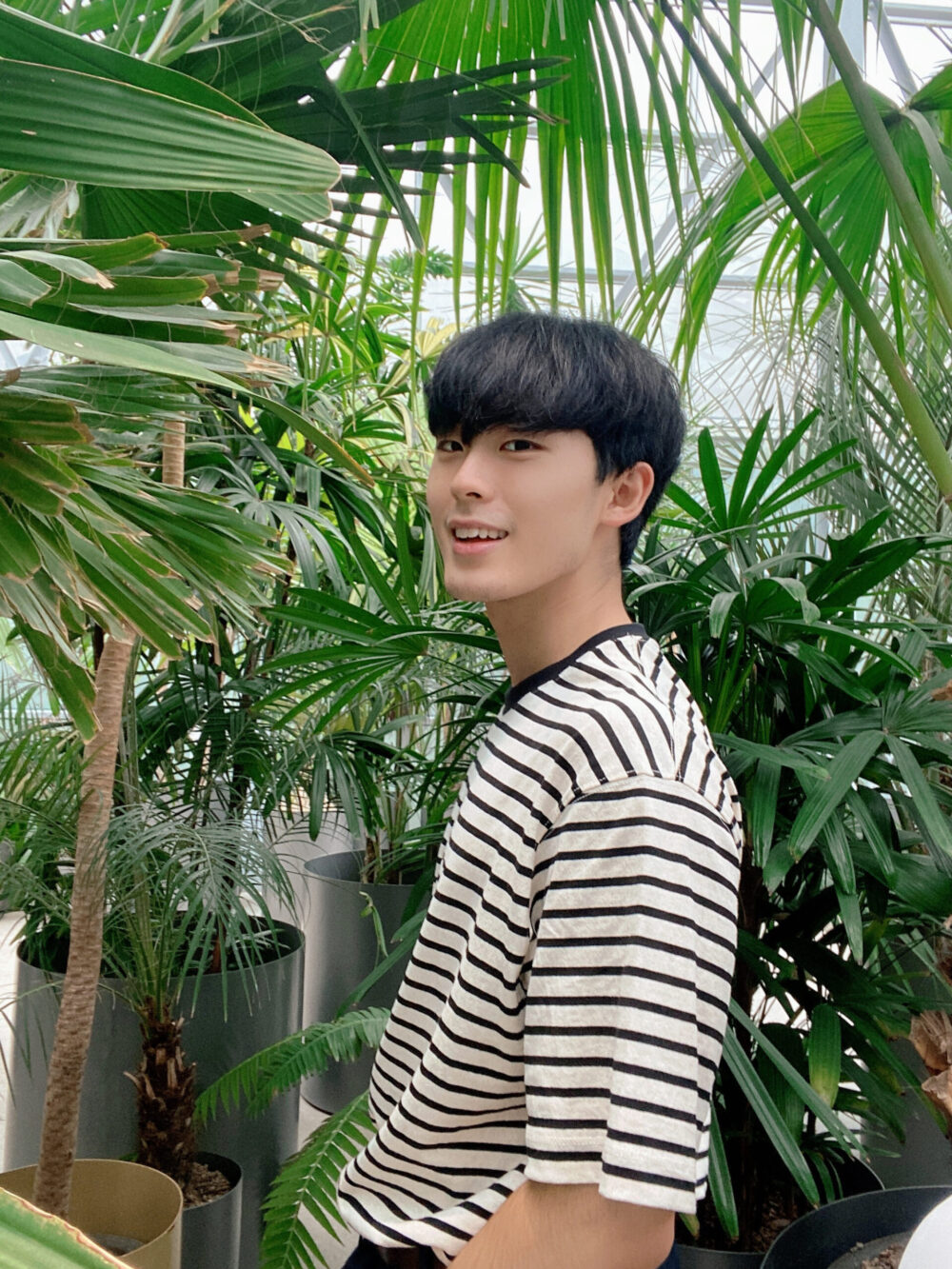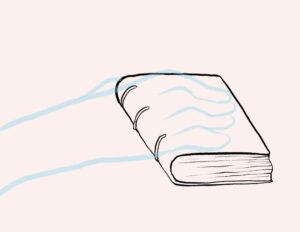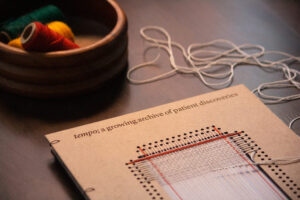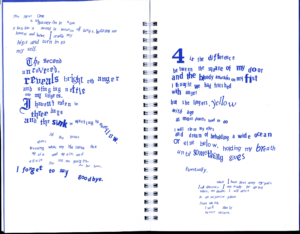Thirty Seconds Memory Archive
Chan Ho Park
See it On Campus: Level 2
Visitor InfoHallway near the back enterance

Welcome to Thirty Seconds Memory Archive.
This is a website that allows you to store memories for the future.
I collect, store, and trasfer memories to appreciate and preserve what we have today.
What memories do you want to archive for the future?
Abstract
This speculative design project suggests how people can revisit their memories and appreciate what we have today. Through web design and packaging, this exhibition creates a space for the viewers to question what memories they will archive for the future. This project originates from Seoul, South Korea, and will spread worldwide. I chose South Korea as the beginning of the project since it’s my motherland, and I wanted to archive the beautiful memories I made from there.
The project consists of three main sections. Part one, 있을 때 잘해 (Love Me While You Can), is the motion graphics posters for the fictional exhibition and the website. It begins to set the atmosphere by explaining the extinction of South Korean civilization. The other poster introduces the Thirty Seconds Memory Archive website, where people can access and store their archives for the future. Part two, the 30SM website, is where I collected and stored chosen archives for the viewers to understand the core message.
Thirty Seconds Memory Archive takes the setting in the near future, where South Korean civilization went extinct due to war. People store their memories on the 30SM Website, which resembles the Golden Record Project of Seoul. Therefore, after extinction, only the memories on the website remain. I created this dystopian setting to look back and appreciate what we have today.
The website works as a time machine to the past and the future. It revokes emotions and memories from the past, and it is a message we leave for others to remember us, specifically the South Korean Civilization. Part three, Future Archeologist, is the replica of vinyl records and Kodak film, which is the collection of the physical archives. In case of extinction, archeologists will play the records and develop the film roll to view the memory archives we left for them.
Posters: Love Me While You Can
The posters guide the viewers to understand the exhibition and the website. I created two sides to resemble vinyl records. This exhibition represents what you will see inside the vinyl record and the film. Then the other poster is an introduction to the 30SM website, where the viewers can access and archive their memories. I plan to purchase the domain for people to access the website at home to upload their photos and audio recordings.
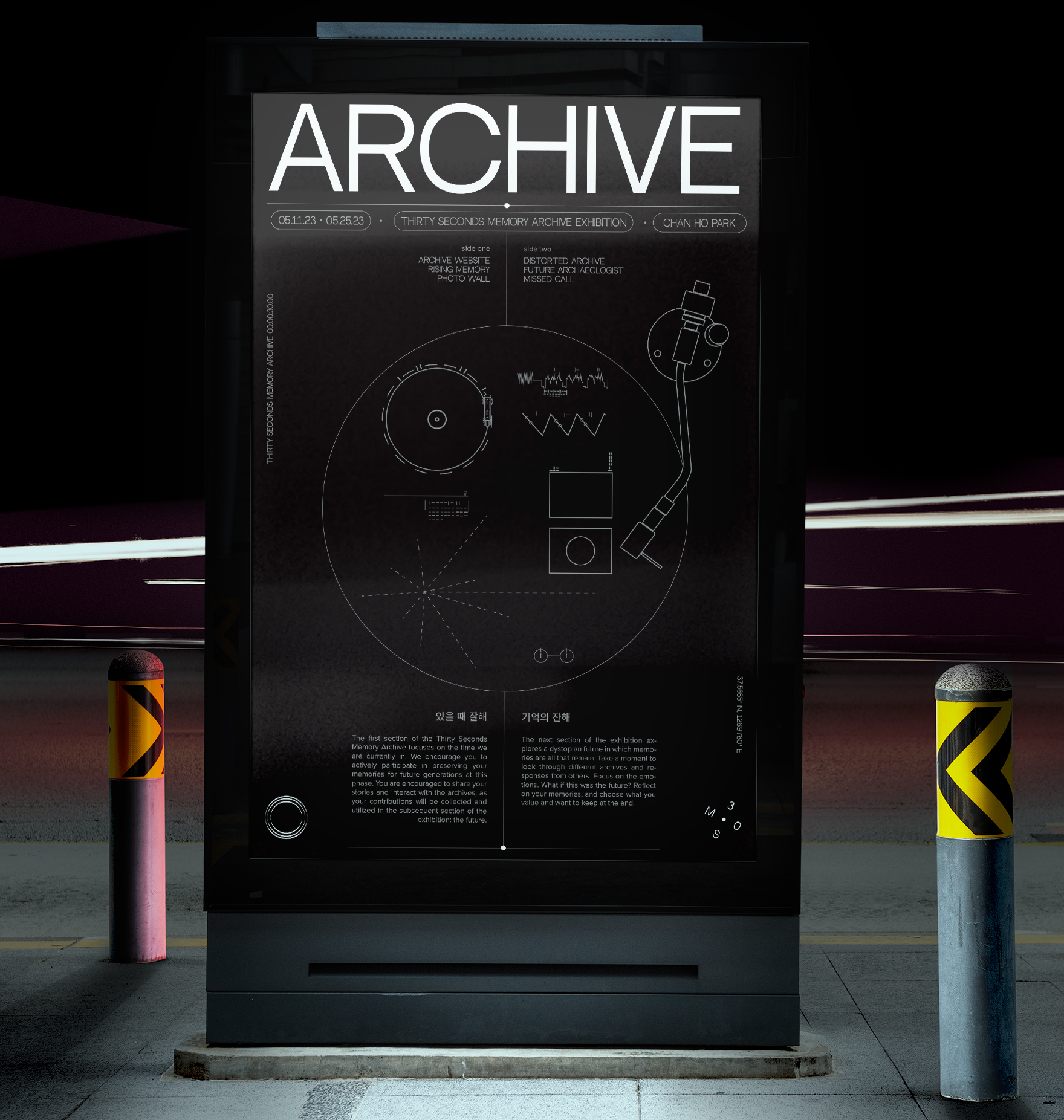
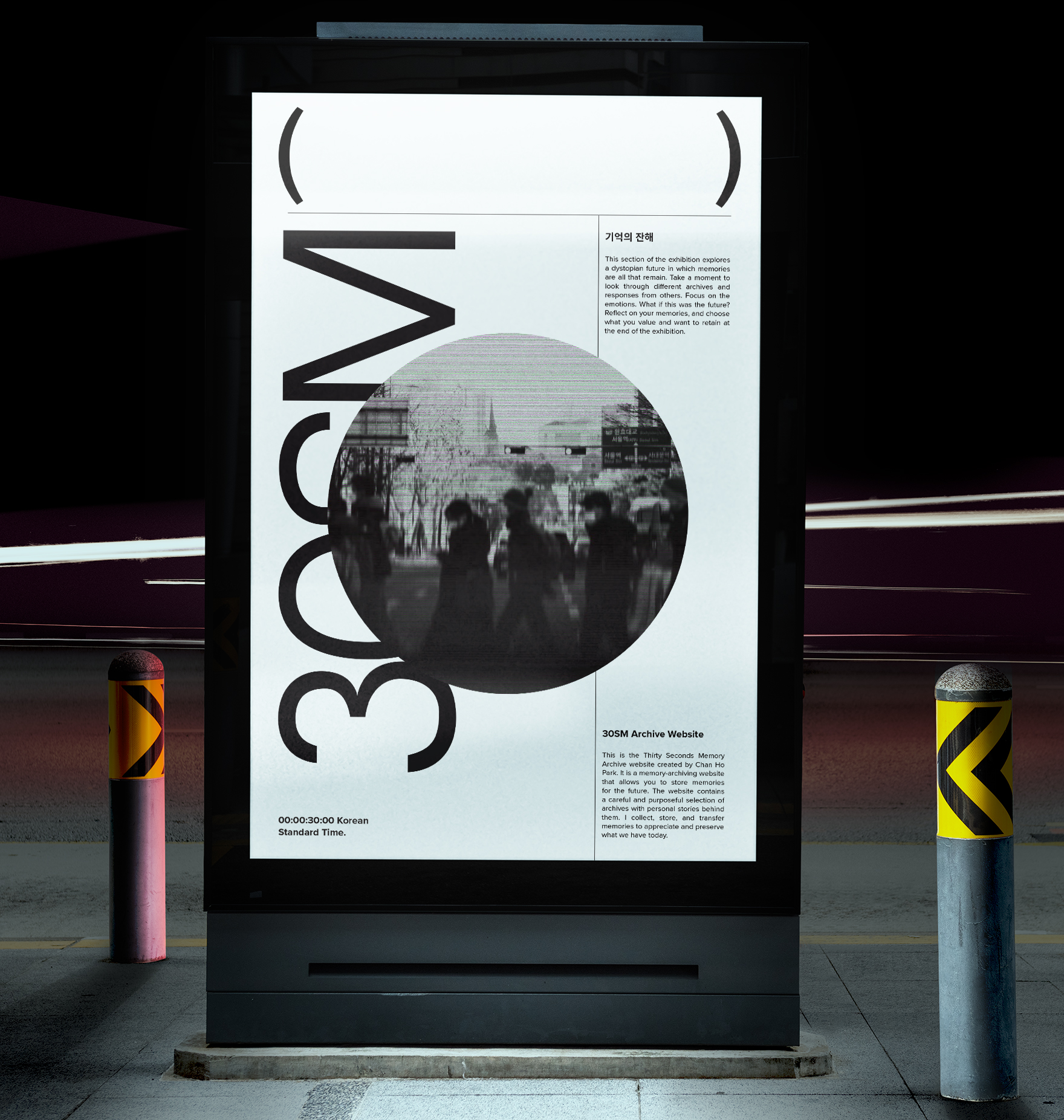
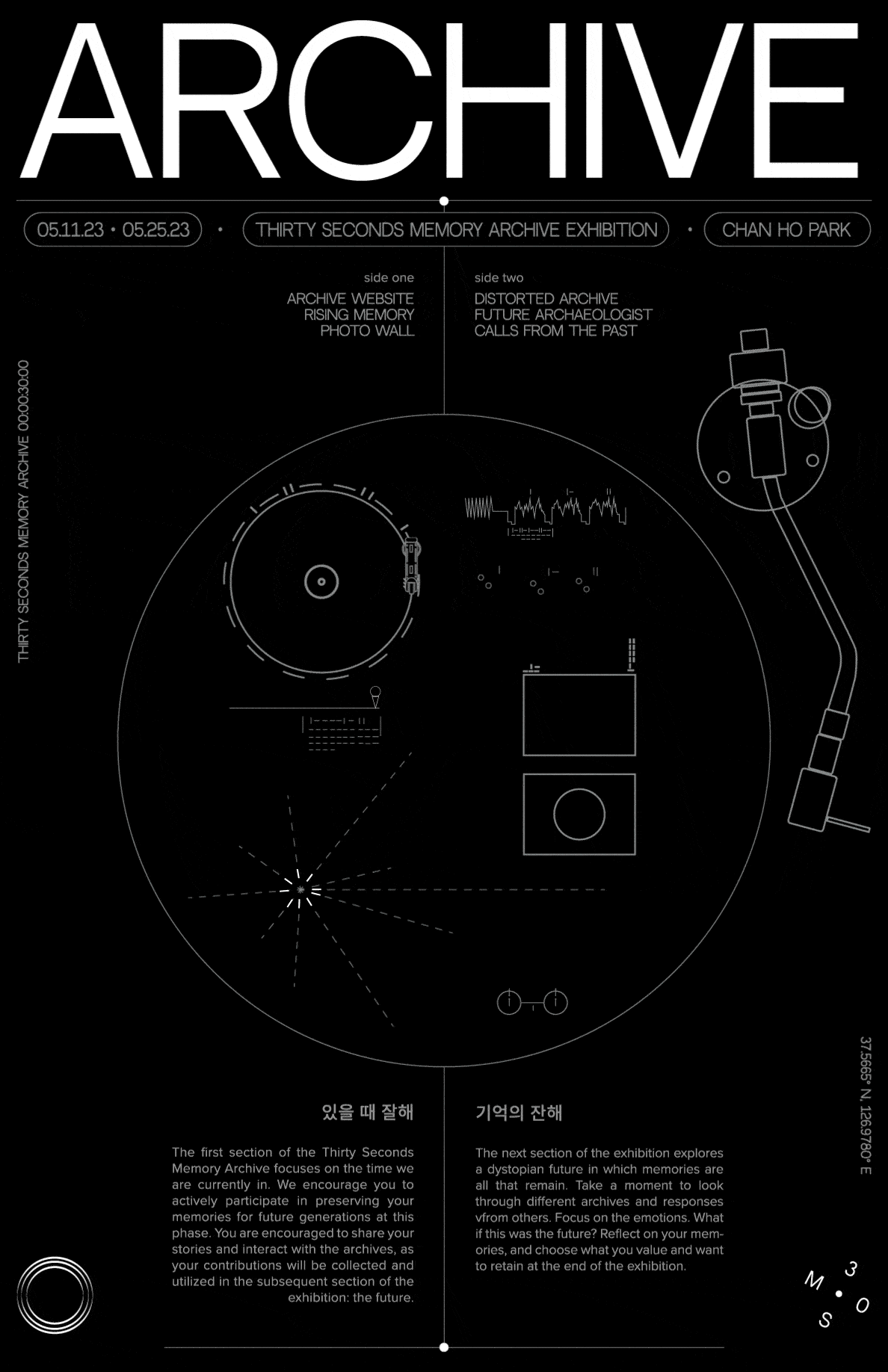

Final motion graphic posters and mockups.
Replica: Future Archeologist
The replica section acts as a tool to show the physical archives. I designed the covers of vinyl records and a Kodak film. They carry the memories inside them like the Golden Record project, but it plays only in case of extinction. Therefore, I wanted to create a South Korean version of the Golden Record. Although it is only a conceptual piece, it extends the potential of a larger project.
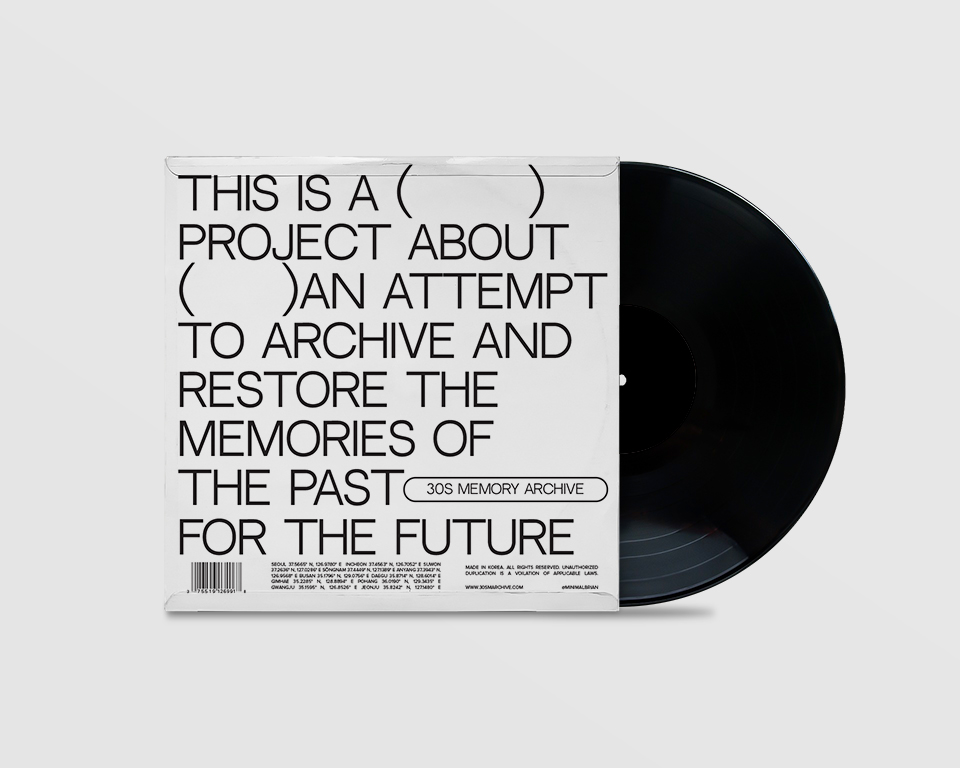
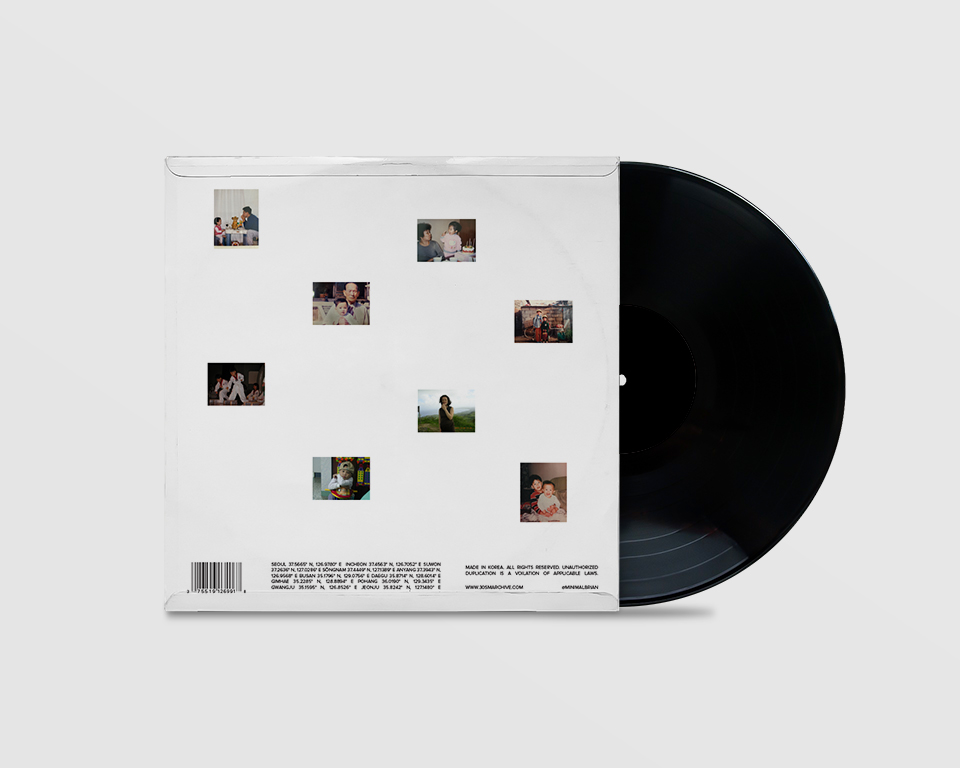

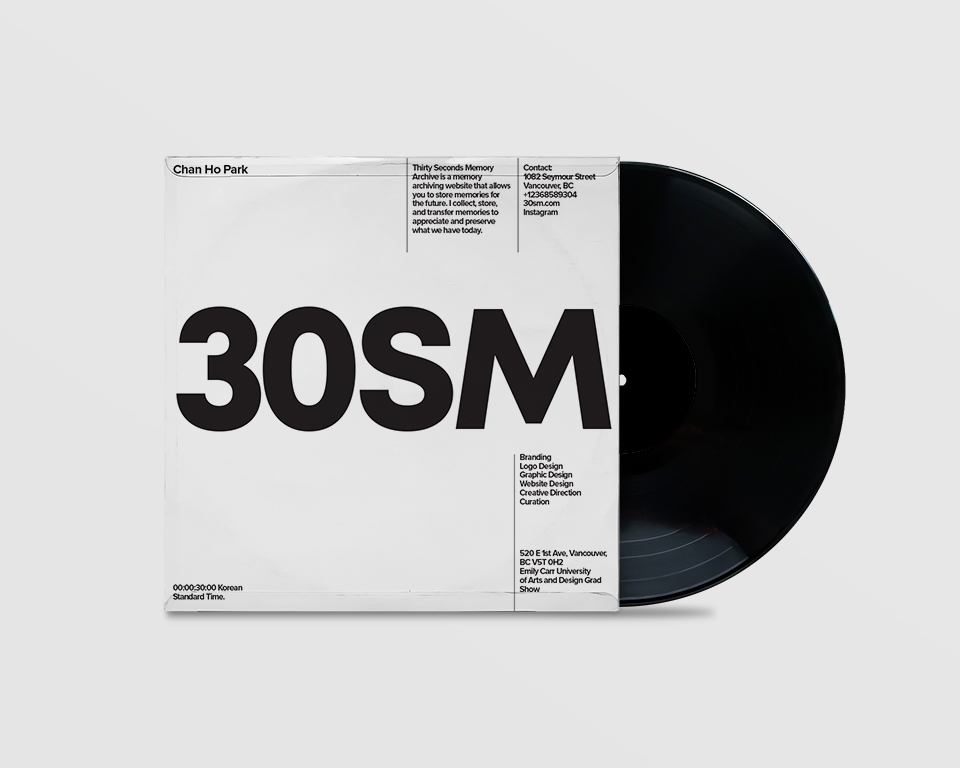


Replica of the Golden Record and Kodak film box.
30SM Website
The website contains five sections: ( ), Object, Photo, Missed Call, and Memory. ( ) is where the viewers can order archives and have them delivered to their email or archive their memories. Object presents the objects people archived as their loved possessions, such as a vinyl record, Coke Zero, and wedding rings. Photos and Memories share a similar aesthetic that is comfortable to navigate. The memories I collected are written in Korean since the exhibition took place in Seoul, and I asked South Koreans to archive their memories.
Missed Call is the only part with audio in them. This part suggests the viewers leave a voice message to the ones they cannot reach out to again. It could be a friend, ex-girlfriend, grandma, or anyone they wish to call. The objective is to revisit memories, evoke emotions, and interact with the archives.
This screen recording shows the 30SM website landing page, ordering archives, and archiving memories.
This screen recording navigates the 30SM website’s Object, Photo, Memory, and Missed Call.
This screen recording navigates the 30SM website’s menu.
Process

Logo
The logo with a 3, 0, and M best represents the delicacy of remembering. The Thirty Seconds Memory Archive got its name from the concept that it takes thirty seconds for a short-term memory to either disappear or transfer into a long-term memory which will archive forever.
Color Palette
I only used black and white for the project since the Golden Record project’s images were black and white when decoded. Also, I wanted to give a film-developed aesthetic.


Font
I used Proxima Nova and Neutral Face as my leading font. Neutral Face is emotionless and effective since it does not bother the eye of the viewers and lets them focus on the context and the artwork. Also, Proxima Nova is modern and does not do too much of anything. I wanted the fonts to only be a tool for delivery instead of speaking for themselves.
Conclusion
This exploration of archiving memories for the future brings a key message I want the viewers to take away. Similar to the Golden Record project, the act of archiving memories as human beings is a significant act only we can do. We do not know how long as humans or species we have left on Earth. For example, a war in Ukraine caused the loss of beautiful cultures and architecture. Therefore, trying to live in the moment and preparing the archive for future generations seems reasonable.
As a designer, I think there should be more encouragement to start archiving all the memories we want to keep. It might be photos, objects, or conversations with others. I hope this exhibition and the website highlight the potential of this interactive project.
